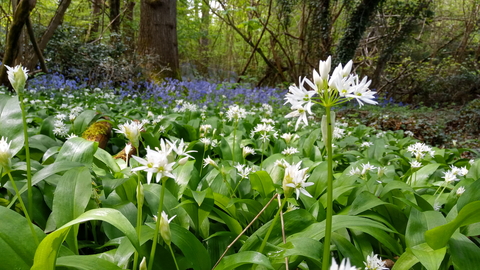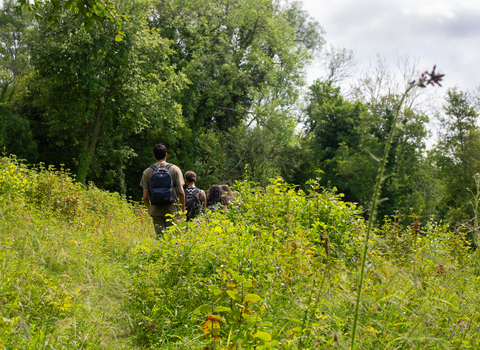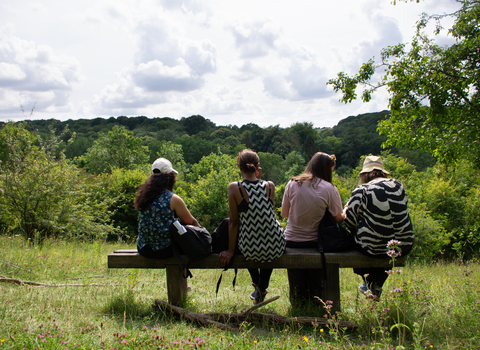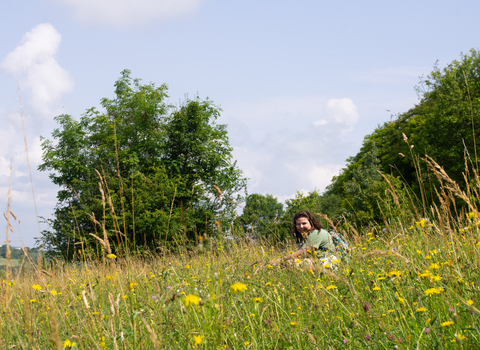
© London Wildlife Trust
Wild cherry blossom

©Neil Aldridge
Threecorner Grove
Know before you go
Dogs
When to visit
Opening times
Open at all timesBest time to visit
April to JulyAbout the reserve
On the Surrey border sits Threecorner Grove, a triangular woodland that neighbours Hutchinson’s Bank and Chapel Bank in New Addington. It is a magical stand of ancient chalk woodland, overseen by a tall canopy of oak, ash and wild cherry, with field maple, small-leafed lime, and whitebeam trees, some of which tower up to 25 metres. Ancient woodland indicators such as wood sorrel, plus evidence of long-standing earth banks along its edges, are testimony to Threecorner Grove’s age and stability; a woodland largely undisturbed for hundreds of years.
History
Chalk grassland develops on shallow lime-rich chalky soils that are nutrient-poor and free-draining, and in London this internationally important habitat is predominantly found in the southern parts of the boroughs of Bromley, Croydon and Sutton.
This part of the North Downs was traditionally grazed by sheep until the 1950s, but changes occurred as new settlements such as New Addington and Forestdale developed. London Wildlife Trust began managing nearby reserve Chapel Bank in 1984 and another reserve Hutchinson’s Bank in 1987. Grazing was re-introduced to Hutchinson’s in 1995, and Chapel Bank in 2011, for the first time in half-a-century. Threecorner Grove was included into the reserves’ management in 1997, as was the verge alongside Featherbed Lane north of Hutchinson’s Bank.
Status
Part Site of Metropolitan Importance for Nature Conservation, Metropolitan Green Belt
Get involved
Volunteering opportunities
Visit our volunteering page to find out how to get involved
Record your sightings
Species
Contact us
Wild cherries of Threecorner Grove
Threecorner Grove is a tiny pocket of ancient woodland, nestled between Hutchinson’s Bank and Chapel Bank. Cherries are more familiar as small trees, usually found in parks, gardens or woodland edges, but the wild cherries of Threecorner Grove in Croydon stand over 23 metres high. In spring they make a magnificent sight, covered with bright white blossom. In summer their fruits are eagerly devoured by thrushes and woodpigeons.
© Mathew Frith



